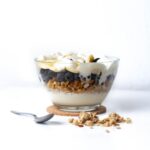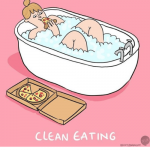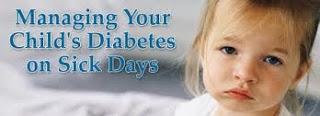In Kenya today, most of the women with children are clueless of the diabetic nature of their infants. Some of them realize when it is too late because they do not quite understand the symptoms.Normally, the symptoms that are degenerative for infants with the disease are:
Weight loss
children and babies in unexpected and unexplained weight loss. Since glucose in diabetics is not taken by cells, fat is used a s a source of energy, which leads to weight loss. The child may be eating normally but still loses weight with diabetes.
Polyuria
Polyuria is some of the early signs that a baby may have diabetes. Polyuria is an increased amount of urine produced, which causes babies to urinate more frequently.. Since diabetic babies do not produce enough insulin to release the glucose from the blood, it goes to the kidneys. Kidneys have to flush this over abundance of glucose in their tissues. To do this more urine is produced. SO watch for an increase in the urinary frequency of a babies as an early sign of diabetes.
Breath odor
Another sign of babies having diabetes is an increase in the intensity of the smell of their breath. The smell is kind of a sweet smell. This smell is the result of a condition developed by diabetics known as ketoacidosis: an increase in the concentration of ketones in their bodies. Ketoacidosis also causes babies skin to dry excessively and to have a pale tone.
Increase in the frequency of skin rashes
Babies with diabetes seem to have a tendency to get skin rashes more frequently. Diaper rash seem to be more prominent in babies with diabetes. This may be the result of skin getting dry through the process of ketoacidosis.
If you realize your child has these symptoms then you need to rush them to the doctor for prognosis. But how do you get there? It all revolves around the food given to the infant!
Today Kenya has over two million people and 25,000 children living with diabetes type 1, a trend experts blame on poor dieting, genetics and unhealthy lifestyle. Out of every 100 diabetics, ten of them are children. Type 1 diabetes, which is also referred to as childhood-onset diabetes, is caused by inability of the pancreas to produce insulin.
Normally, this happens after the child has been weaned into taking food components which confuses the parents. The children ought to be leveled to a habit of taking in healthy and unrefined foods. Restrain your child from taking foods in too much energy yet they do not exercise!
Let your child take more foods rich in fiber and low in carbohydrates right from the time weaning begins.
You know the way everyone thinks that mashed bananas and pumpkins are the food for the baby, it is important to let the baby eat what you are eating that is healthier. A dish of brown rice with legume protein like ndengu and spoinach blended into one makes a good meal for the infant!
As well, eating out creates the problem with children overgrowing their weight after engaging in habits that are unhealthy..
It is sad that once you get the diabetes, you have to live with it! for a child this is a struggle by itself.
A mother ought to therefore, insist on being tested for sugar levels especially during the second trimester of pregnancy to avoid the baby growing too big which causes diabetes in the life of the child.
I recommend these foods:
Fibre diet that can be taken for breakfast:
- Weetabix
- other preferred cereals with milk
- Banana-ensure it is just one since it is a culprit of increase in energy levels
- Vegetables
- Bread-give bread occassionally since it increases calories which are lethargic especially for a child who is not active
Vegetables:
- emphasize on cabbage intake in plenty to beat the fat and calories in the body.proteins need a tone down to avoid their intake being converted into excess sugar in the blood.
There is a recommended porridge flour for diabetics that can be given to the child, and can be found in supermarkets by the name FaFA D.
I love Questions,post them here:









